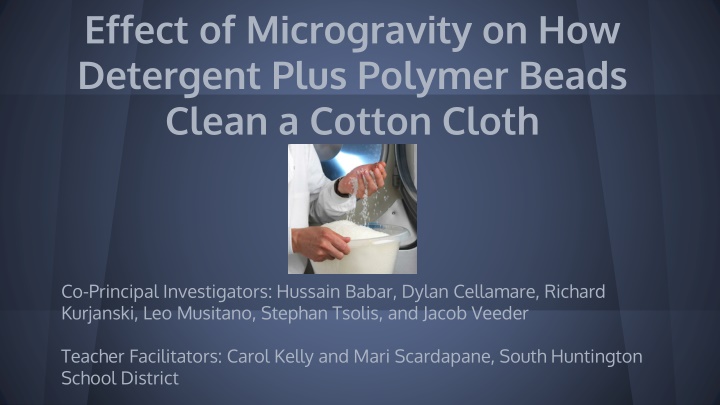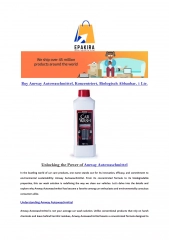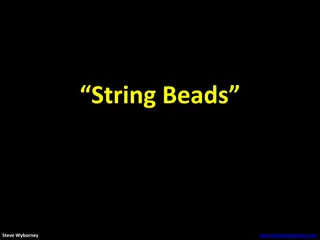Impact of Microgravity on Detergent and Polymer Beads Cleaning
Investigate the efficacy of combining detergent and polymer beads in cleaning cotton cloth in microgravity conditions. The experiment will be conducted using a Type 3 Minilab in the NanoRacks FME, analyzing texture and color changes post-cleaning with the aid of a microscope and color wheel. Potential benefits include exploring water-efficient laundry methods and stain removal in space.
Download Presentation

Please find below an Image/Link to download the presentation.
The content on the website is provided AS IS for your information and personal use only. It may not be sold, licensed, or shared on other websites without obtaining consent from the author.If you encounter any issues during the download, it is possible that the publisher has removed the file from their server.
You are allowed to download the files provided on this website for personal or commercial use, subject to the condition that they are used lawfully. All files are the property of their respective owners.
The content on the website is provided AS IS for your information and personal use only. It may not be sold, licensed, or shared on other websites without obtaining consent from the author.
E N D
Presentation Transcript
Effect of Microgravity on How Detergent Plus Polymer Beads Clean a Cotton Cloth Co-Principal Investigators: Hussain Babar, Dylan Cellamare, Richard Kurjanski, Leo Musitano, Stephan Tsolis, and Jacob Veeder Teacher Facilitators: Carol Kelly and Mari Scardapane, South Huntington School District
Acknowledgements: The South Huntington School District would like to gratefully acknowledge the following Local and National funding partners who made this project possible: A Plus Brookhaven National Laboratory CASIS Cameron Engineering Circor Airospace Farmingdale State University Long Island Forum for Technology Subaru of America, Inc. Zion Youth of Elmont We would also like to thank the following step 1 review board participants: Farmingdale University STEP Program The Astronomical Society of Long Island
What are Polymer Beads? Polymer beads are small beads made out of the chemical Nylon 66. When used with detergent, these beads can soak up and trap stains. Little water is needed for this process, making it a very water-efficient way of doing laundry.
In the NanoRacks FME We will be using a Type 3 Minilab to perform our experiment. Volume 1 will be 2.3 mL of H2O mixed with 0.5 mL of Tide Free and Gentle Liquid Detergent. Volume 2 will be 75 polymer beads. Volume 3 will be a 1.5x1.5 cm piece of 100% cotton cloth with a 0.1 mL Echo 2 Cycle Motor Oil stain.
How will the experiment be performed? On the day of arrival, we will unclamp A and shake the FME for 60 seconds. On the second day, we will unclamp B and shake the FME for 120 seconds, mixing the activated beads and the stained cloth. On three subsequent days, the FME will be shaken for 120 seconds each day, in theory, removing or reducing the stain.
How will we know if it worked? In order to test if the polymer beads with the detergent worked, we will use a microscope to look for texture differences between the cloth that went to the ISS and the one that stayed on Earth. A color wheel will also be used to find any color changes that appear to the naked eye, and under a microscope.
How is this beneficial? If the experiment works and the cloth is cleaned, this will be very beneficial for the astronauts aboard the ISS. Water is not in great quantity on the ISS, and polymer beads with detergent don t require a large amount of water. There is currently no way to efficiently clean clothes on the ISS, so this could have a big impact on quality of life on the ISS.
What do we aim to achieve? By testing this experiment, we hope to change cleaning aboard the ISS. We also aim to help change the Polymer Bead Cleaning industry. Lastly, we aim to open up new ideas for experiments to be tested in microgravity.























